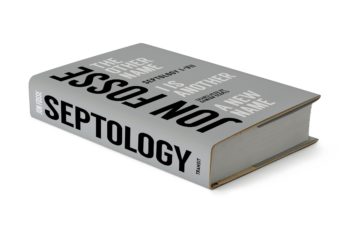Ben Libman at The Point:
 Innumerable nothings happen in the dim, watery fjord lands of Jon Fosse’s novels and plays. In the novella Aliss at the Fire, a woman named Signe lies on a bench and remembers (or hallucinates) her husband Asle, who disappeared one night two decades earlier, after announcing he would head out onto the fjord. In Fosse’s magnum opus, Septology, a widowed painter, also named Asle, spends hundreds of pages thinking about his wife, his doppelgänger, his neighbor and the painting he can’t seem to rid himself of. Almost nothing occurs. And everything that does, recurs.
Innumerable nothings happen in the dim, watery fjord lands of Jon Fosse’s novels and plays. In the novella Aliss at the Fire, a woman named Signe lies on a bench and remembers (or hallucinates) her husband Asle, who disappeared one night two decades earlier, after announcing he would head out onto the fjord. In Fosse’s magnum opus, Septology, a widowed painter, also named Asle, spends hundreds of pages thinking about his wife, his doppelgänger, his neighbor and the painting he can’t seem to rid himself of. Almost nothing occurs. And everything that does, recurs.
Readers don’t appear to mind. It might seem startling that an Anglophone literary culture whose appreciation of contemporary Norwegian literature is mostly limited to a single name—Karl Ove Knausgaard—should have, in recent years, latched onto a writer so neatly Knausgaard’s opposite. One is a mediaphilic materialist who writes arresting, conventional prose; the other a mediaphobic metaphysician whose flowing, recursive sentences span the lengths of entire novels.
more here.
